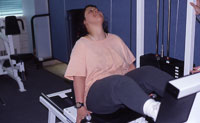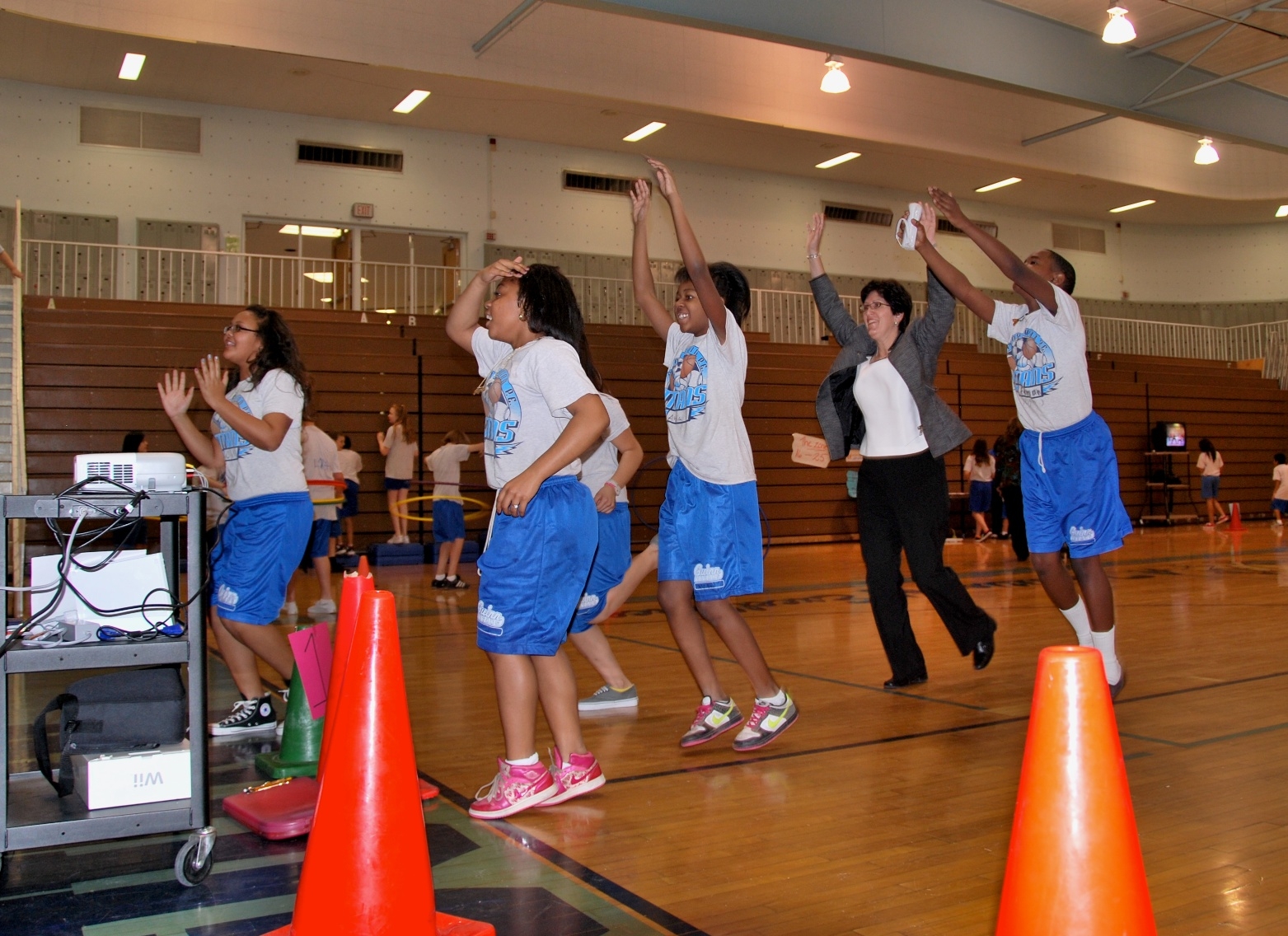by ODPHP January 31, 2011

On January 31, Agriculture Secretary Tom Vilsack and Secretary of the Department of Health and Human Services Kathleen Sebelius announced the release of the Dietary Guidelines for Americans, 2010. We are pleased to share these evidence-based guidelines with the physical activity community. The guidelines offer nutrition guidance to promote health and reduce the risk of chronic diseases and reduce overweight and obesity through improved nutrition and physical activity.
This new version of the Dietary Guidelines for Americans, 2010 places stronger emphasis on reducing calorie consumption and increasing physical activity to help with confronting the obesity epidemic.
The new Dietary Guidelines for Americans focus on balancing calories with physical activity, and encourage Americans to consume more nutrient dense foods like vegetables, fruits, whole grains, fat-free and low-fat dairy products, and seafood, and to consume less sodium, saturated and trans fats, added sugars, and refined grains. These guidelines continue to advise the public to consume alcohol in moderation, if at all. The Dietary Guidelines physical activity recommendations are from the 2008 Physical Activity Guidelines for Americans.
The new guidelines also include a call to action for helping Americans make healthy choices for lifelong healthy eating, physical activity, and weight management. We encourage physical activity organizations and practitioners to take an active role in the movement to make American healthy by using these new guidelines in your communities and by helping Americans bring the key recommendations into their lives.
To learn more about the guidelines visit: www.dietaryguidelines.gov.
Please join us as we ensure that all Americans have access to actionable information about how to incorporate the guidelines into their lives, nutritious foods, and opportunities for physical activity.
How does your organization envision using the new Dietary Guidelines for Americans?
by NCPAD January 26, 2011

One of the objectives for Healthy People 2020 isReduce the proportion of adults who engage in no leisure-time physical activity to “increase the proportion of people with disabilities who report having access to health and wellness programs”. According to the U.S. Department of Labor, more than 20 million families in the U.S. have at least 1 member with a disability, and in one out of every 5 households in the U.S., a family is caring for a child that has unique health care needs. Barriers to physical activity in people with disabilities within the United States and many other countries throughout the developing world have contributed to significant public health problems confronting our society today. Some benefits of physical activity include increased cardiac and pulmonary function, improved ability to perform activities of daily living, protection against development of chronic diseases, decreased anxiety and depression, enhanced feeling of well-being, weight control, lowered cholesterol and blood pressure.
There is a strong call to action for public health officials to implement evidence-based physical activity interventions that are inclusive of people of all abilities. Due to the many barriers individuals with disabilities face in their physical activity efforts, it is important for us to come up with creative delivery methods for these interventions and opportunities for being physically active. With the popularity of social networking sites, viral video, and other technology, one way that the National Center on Physical Activity and Disability is attempting to address this is through a video contest entitled, “How do you get enough?”
Being physically active is good for everybody. This is especially true for people with disabilities who tend to participate in less physical activity, carry excess weight and have higher rates of chronic heart disease and other health conditions. The intention of this video contest is to illustrate to society that people with disabilities do live healthy active lifestyles as well as share various ways to get physical activity for individuals with disabilities and activity limitations. This video contest will be promoted through social networking sites such as Facebook and Twitter, and video sharing sites such as Youtube.
With two billion views on YouTube per day, this largely untapped market place of adults with disabilities and parents of children with disabilities can make a huge impact by showing the world how people with disabilities get their physical activity. Also, with the increase of cameras and cell phones with video capabilities, many people without expensive camera equipment and editing expertise are able to create these hugely popular videos without much effort. Whether it’s indoor or outdoor, recreational or competitive, solo or team, easy or intensive, we (and the rest of the world) are looking how people with a wide variety of abilities (whether successfully or unsuccessfully) get enough activity in a 1-10 minute video clip! For more information, please see the contest rules at http://www.ncpad.org/newsletter/newsletter.php?letter=123§ion=1593. For a sample video please visit http://www.youtube.com/watch?v=9AGgD9rFdsA.
How are you using the Healthy People 2020 objectives to increase physical activity? How do you work with clients and your community to encourage persons with disabilities go get enough activity?
d4b7cbee-aaf3-46ac-b8b7-8a98da3e39af|1|5.0
Tags:
by PCFSN January 18, 2011

Earlier this month, I had the privilege of attending one of the largest electronics shows in the world—the Consumer Electronics Show (CES) in Las Vegas, Nevada and experiencing the latest and greatest in active gaming. While we often associate technology with sedentary living as we text, email, or watch a screen, it can also be a tool for good. Active gaming is one way technology can encourage and promote physical activity and meet youth and adults wherever they are on the ability spectrum.
The Healthy People 2020 physical activity objectives include measures for screen time with the goal of limiting television or video game exposure to no more than 2 hours a day for youth ages 2-18 years old. However, that does not mean that the allotted 2 hours cannot include some active gaming—like active options that may be part of a comprehensive physical education curriculum.
Before attending CES I had an opportunity to see first-hand how active gaming can play a role in physical education at Kenny Guinn Middle School. Nestled within the 5th largest school district in the Nation, their physical education classes use active gaming as a way to help integrate special needs students with their peers. When the teacher asked who was excited to do some active gaming, everyone yelled “Me!” As the students rotated through the stations, I had the opportunity to work out with them. Very soon I realized that I couldn’t tell who was ‘challenged’ or not. To me they were all excited kids being active…jumping, kicking, and punching. No one was singled out or separated and each student participated to the best of their ability. And not only were they doing active gaming but they also learned about body mass index (BMI) by using bio impedence machines and ipods.
Keeping a level playing field is important as we work towards meeting the goals outlined in Healthy People 2020. Active gaming is a great way to meet youth where they are and is a fun way to promote sustained movement regardless of one’s age, fitness level or ability. After all, if my 88-year-old grandmother can play a bowling videogame and love it, I know I can too!
So, what is your favorite active game? And where do you see fitness technology taking us in the future?
**Image Caption: Shellie Pfohl, Executive Director of the President’s Council on Fitness, Sports & Nutrition getting her daily dose of physical activity the active gaming way with the students of Kenny Guinn Middle School, Las Vegas, NV.
4f63ba0d-43a4-4ace-94d5-075a73a61676|2|5.0
Tags:





